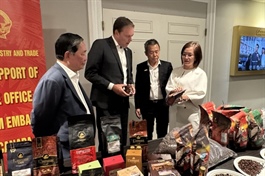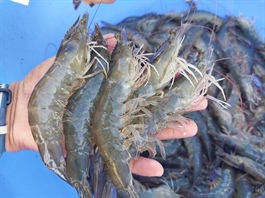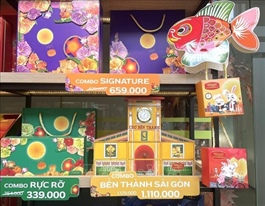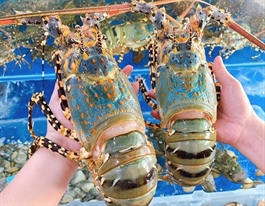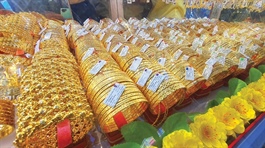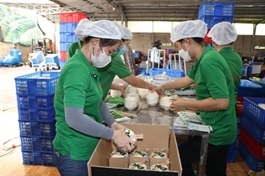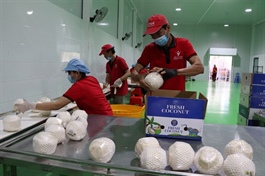Traditional fish drying craft provides large number of jobs along Mekong Delta coast
Traditional fish drying craft provides large number of jobs along Mekong Delta coast
A traditional craft of drying fish in Đồng Tháp Province’s Gia Thuận Commune has become a key source of livelihood for hundreds of coastal workers, turning the abundant local catches into products that secure incomes and sustain a cultural tradition.
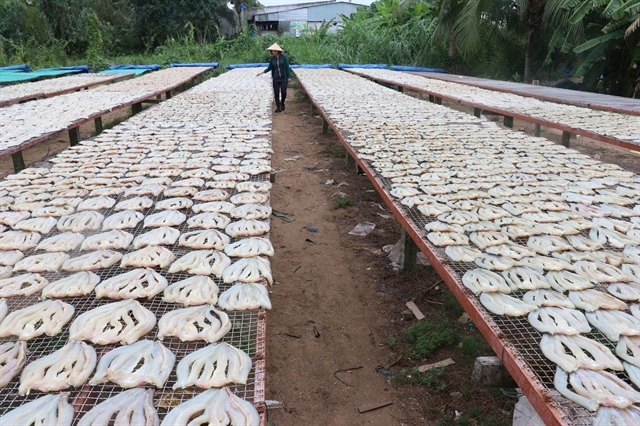
Workers sun-dry snakehead fish in Đồng Tháp Province. — VNA/VNS Photo |
According to Huỳnh Thanh Toàn, chairman of the commune People’s Committee, the community has long been known for its seafaring and fishing.
To support local consumption and add value to the catch, a dried fish processing village has developed alongside offshore fishing, generating jobs for many workers while contributing to household incomes and the local economy.
The activity is concentrated mainly in Chợ No.1 and Chợ No.2 traditional markets, where small and medium-sized facilities account for 38 per cent of the 1,338 households engaged in aquatic processing.
Each year Gia Thuận uses 5,000 tonnes of lizardfish, tongue sole, yellow-stripe scad, cardinal fish, and croaker to produce around 1,500 tonnes of dried products.
While some households sell directly to consumers, many sell to wholesalers in HCM City, Mỹ Tho, Vĩnh Long, and Tây Ninh.
At Kim Loan dried fish facility, owner Hồ Thi Thắng explained that production would depend heavily on the catch landing at local ports.
“We buy whatever the boats bring in.”
On average, five to six workers are employed daily to clean, fillet and sun-dry fish before being sold.
The traditional process involves cleaning, gutting and scaling before salting or marinating the fish, then placing them on bamboo racks to dry under the sun, turning them twice daily.
With good weather, two days of sun are enough to achieve the desired quality.
Lê Văn Danh, another local producer, said that the work would continue day and night depending on the tides and fishing schedules.
During peak seasons, when fish arrive in large volumes, the surplus would be preserved in cold storage with ice and salt before processing.
Formerly a fisherman, Danh switched to dried fish production more than a decade ago, and now employs a dozen workers at his facility.
Sustaining a traditional livelihood
In Chợ No.2, the processing and supply facility run by Trần Thị Thu is one of the best known in the commune.
With a family tradition spanning decades, she now employs 26 workers daily.
“The average income of each worker is VNĐ3.5–4 million ($140–160) per month, but during peak fishing periods earnings increase as more fish are processed,” she said.
Her output averages one tonne of dried fish per day, mainly lizardfish, cardinal fish and tongue sole, most of which is sold in HCM City.
Demand is strong and at times her production cannot keep up.
Yet the sector is vulnerable to natural conditions. In dry, sunny weather, dried fish is of higher quality, attractive in appearance and less costly to produce.
But during the rainy season quality declines and costs rise because additional heating is required to complete the drying process.
Many facilities, including Thu’s, use traditional methods of heat-drying, blowing warm air from coal-fired stoves across drying racks.
The process must be carefully monitored to ensure consistent quality.
Chairman Huỳnh Thanh Toàn said the commune would continue advising the provincial authorities to provide better guidanceand organisation for local craft villages.
“We need to standardise production to add value, improve product quality and increase incomes for workers.”
To preserve and expand this traditional livelihood while meeting modern market demands, Gia Thuận’s dried fish craft village requires further investment in infrastructure.
Local authorities are seeking improvements such as upgraded production grounds, pre-processing houses, paved drying yards for all-weather operations, and a centralised wastewater treatment system to prevent pollution.
With appropriate investment and organisation, the dried fish craft in Gia Thuận Commune can not only sustain a cultural tradition but also create more employment opportunities for local communities.
By linking offshore fishing with local processing, the village offers a model of economic resilience that combines heritage with sustainable development.
- 10:56 23/09/2025




